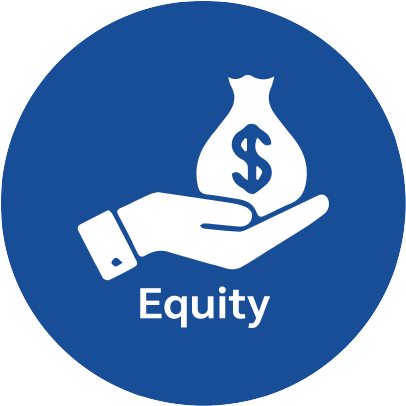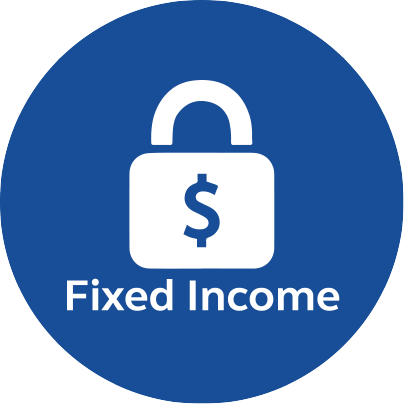5 min read I Date: 30 August 2022
Global Outlook
In July 2022, global markets recovered with the equity and bond markets, recording healthy increases. Developed markets posted stronger increases relative to Asia Pacific bourses. In the month, S&P 500, European bourses and Nikkei 225 rose 9.1%, 7.6% and 5.2% respectively while Chinese H-shares listed in Hong Kong and Shanghai Composite dropped 10.2% and 4.3% respectively. Bonds indices rose ranging from 1.2% to 2.1% for the month.1
On the monetary policy front, it is likely that the central banks will refocus on the risks to growth, on top of the inflationary risks. The latest U.S. Federal Reserve (Fed) statement reinforced earlier guidance on interest rate trend to contain inflation. The Fed’s balance sheet shrinkage started in June 2022 at a run-off rate of USD47.5 billion before projected to rise to USD95 billion in September.2
We have a slight preference for Asian equities over bonds due to Asian equities being under-owned, cheap, and having realistic earnings estimates. Within bonds we prefer local and regional to global developed market fixed income.
We remain neutral on equity markets for developed economies.
General outlook of the two capital markets: Fixed Income & Equity
Region: Developed economies
- Our view – Neutral
- Developed Markets economic fundamentals remained sound with improving employment. There is downside risk to growth & earnings should geopolitical uncertainties persist.
- The Fed reinforced guidance on interest rate trend and signalled balance sheet shrinkage to start in June 2022.2

- Our view – neutral.
- Developed Markets economic fundamentals have shown signs of weakening. There is downside risk to growth & earnings should inflationary pressures persist.3
- We remain neutral on the United States (U.S.), European Union (E.U.) & Japan on concerns over economic growth, inflation, higher interest rates and the geopolitical uncertainties.
Region: Regional (Asia-Pacific ex-Japan)

- Our view – neutral.
- Pockets of opportunity in local Asian currencies and Chinese credits as yields remain relatively attractive.
- We forecast Asian bonds to provide a return of 4.00% to 5.00% in 2022.4

- Our view – positive.
- We added exposure to cheap valuation and China’s visible stimulus policy.
- We continue to focus on quality companies with earnings visibility, robust balance sheet, Equity market share gainers and with pricing power.
Region: China

- Our view – neutral.
- Net supply of bond in the first half of 2022 rose by 29% Year-over-Year (YoY) to RM2.2 trillion. The jump in supply is driven by triple-A (AAA) issuers sector while the State-Owned Enterprises (SOEs) recorded an increase of RM1.6 trillion.5
- The default rate in June 2022 increased to 0.50% from 0.49% driven by property names. The private sector default rate edged up to 3.9% from 3.8% the month before. SOE default rate was unchanged at 0.12%.5

- Our view – positive.
- China has provided better visibility of its policy to support growth. In addition, the lockdown is being cautiously lifted to enable economic activities to resume.
- The manufacturing PMI (Purchasing Managers’ Index) for July 2022 decreased to 49.0 from 50.2 while the Non-manufacturing PMI decreased to 53.8 from 54.7. A large drop in new orders contributed to the drop in the Manufacturing PMI.6
Region: Domestic (Malaysia)

- Our view – neutral.
- Bank Negara Malaysia (BNM) raised the Overnight Policy Rate (OPR) by 25 basis points (bps) to 2.25% in July 2022 S&P Global Ratings revised Malaysia’s outlook to stable from negative previously.7
- Portfolio duration is revised to 1.10x +/- 0.20 from 1.05x +/- 0.20 previously. The move is to take advantage of potential yield falling in anticipation of stronger market support. Still prefer credits over government bonds.

- Our view – neutral.
- We continue to adopt a balanced approach between value and growth while having sufficient diversification.
- We still prefer consumer discretionary, and commodities but turned cautious on commodities. We are also relooking at financials and technology after the recent sell-off.
Our Strategy
- We maintained our Neutral recommendation for developed markets. This is owing to concerns over geopolitical tensions, inflation, and economic growth on the back of rising interest rates. Within bonds, we prefer local and regional to global developed market fixed income. We are mindful of the various risk scenarios that are developing and are focused on ensuring that our portfolio construct has a sensible risk profile.
- We turned slightly positive on Asian equities. This is due to Asian equities being under-owned, cheap, and having realistic earnings estimates. Markets are likely to be focused on quality firms with unique growth drivers, pricing power and reasonable valuations. China and ASEAN offer such ideas that can do well regardless of broad market performance.
- Note that income is integral for a well-diversified portfolio. In short, investors are advised to:
- Be aware of risks to ride out volatilities arising from geopolitical tensions, policy normalisation, inflationary issues, and recessionary concerns.
- Focus on quality growth offered by the developed markets and seek value opportunities within the Asia-Pacific region.
- Position for sustainability themes including renewables, alternative energy, and food sustainability.
1. Universal Funds
| Risk Scale | Fund Options | |
|
Low |
Conservative |
• Principal Islamic Money Market Fund |
| Mildly conservative |
• Principal Lifetime Bond Fund |
|
| Moderate |
• Principal Lifetime Balanced Income Fund |
|
| Mildly Aggressive |
• Principal DALI Global Equity Fund |
|
| Aggressive |
• Principal Global Titans Fund |
2. Islamic Funds
| Risk Scale | Fund Options | |
Low High |
Conservative |
• Principal Islamic Money Market Fund |
| Mildly conservative |
• Principal Islamic Lifetime Sukuk Fund |
|
| Moderate |
• Principal Islamic Lifetime Balanced Fund |
|
| Mildly Aggressive |
• Principal DALI Global Equity Fund MYR |
|
| Aggressive |
• Principal Islamic Asia Pacific Dynamic Equity Fund |
3. EPFMIS Universal Funds
| Risk Scale | Fund Options | |
Low High |
Conservative |
• Principal Islamic Money Market Fund |
| Mildly conservative |
• Principal Islamic Lifetime Enhanced Sukuk Fund |
|
| Moderate |
• Principal Islamic Lifetime Balanced Fund |
|
| Mildly Aggressive |
• Principal Asia Pacific Dynamic Income Fund |
|
| Aggressive |
• Principal Asian Equity Fund |
4. EPFMIS Islamic Funds
| Risk Scale | Fund Options | |
Low High |
Conservative |
• Principal Islamic Money Market Fund |
| Mildly conservative |
• Principal Islamic Lifetime Enhanced Sukuk Fund |
|
| Moderate |
• Principal Islamic Lifetime Balanced Fund |
|
| Mildly Aggressive |
• Principal DALI Asia Pacific Equity Growth Fund |
|
| Aggressive |
• Principal Islamic Asia Pacific Dynamic Equity Fund |
You may obtain a copy of the Prospectus/Information Memorandum/Disclosure Document and its Product Highlight Sheet (if any) for the above-mentioned funds at our offices, distributors or our website at www.principal.com.my.
Click here to download the PDF format
Disclaimer:
We have based this document on information obtained from sources we believe to be reliable, but we do not make any representation or warranty nor accept any responsibility or liability as to its accuracy, completeness or correctness. Expressions of opinion contained herein are those of Principal Asset Management Berhad only and are subject to change without notice. This document should not be construed as an offer or a solicitation of an offer to purchase or subscribe or sell Principal Asset Management Berhad’s investment products. Investing involves risk and cost. You should understand the risks involved, compare and consider the fees, charges and costs involved, make your own risk assessment and seek professional advice, where necessary.
Sources
1Bloomberg, 31 July 2022
2Federal Reserve Board, 4 May 2022
3Principal Global Investors, 31 July 2022
4JP Morgan, 5 July 2022
5BofA Securities, 16 July 2022
6Bloomberg, 5 August 2022
7Bank Negara Malaysia, 6 July 2022